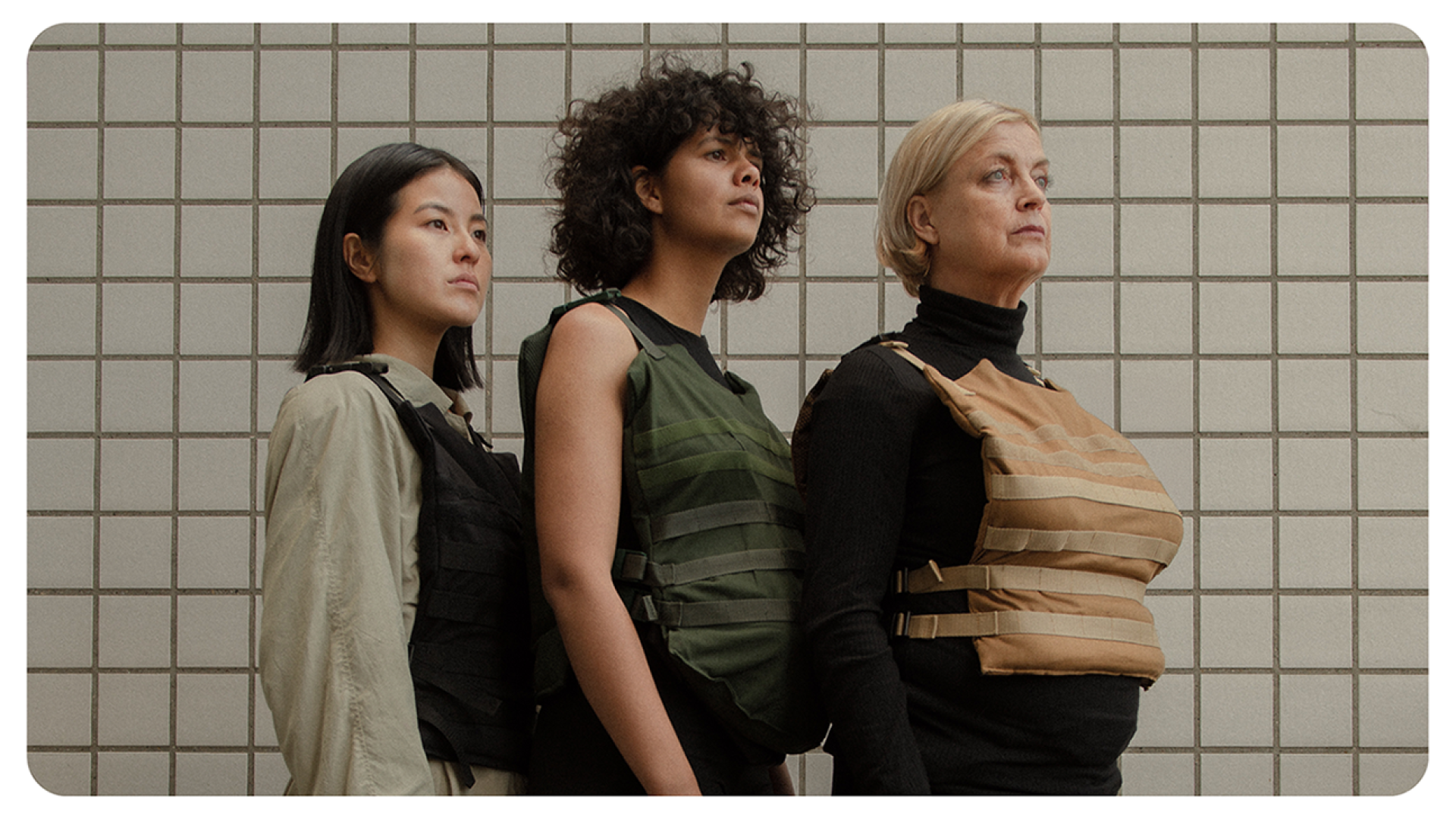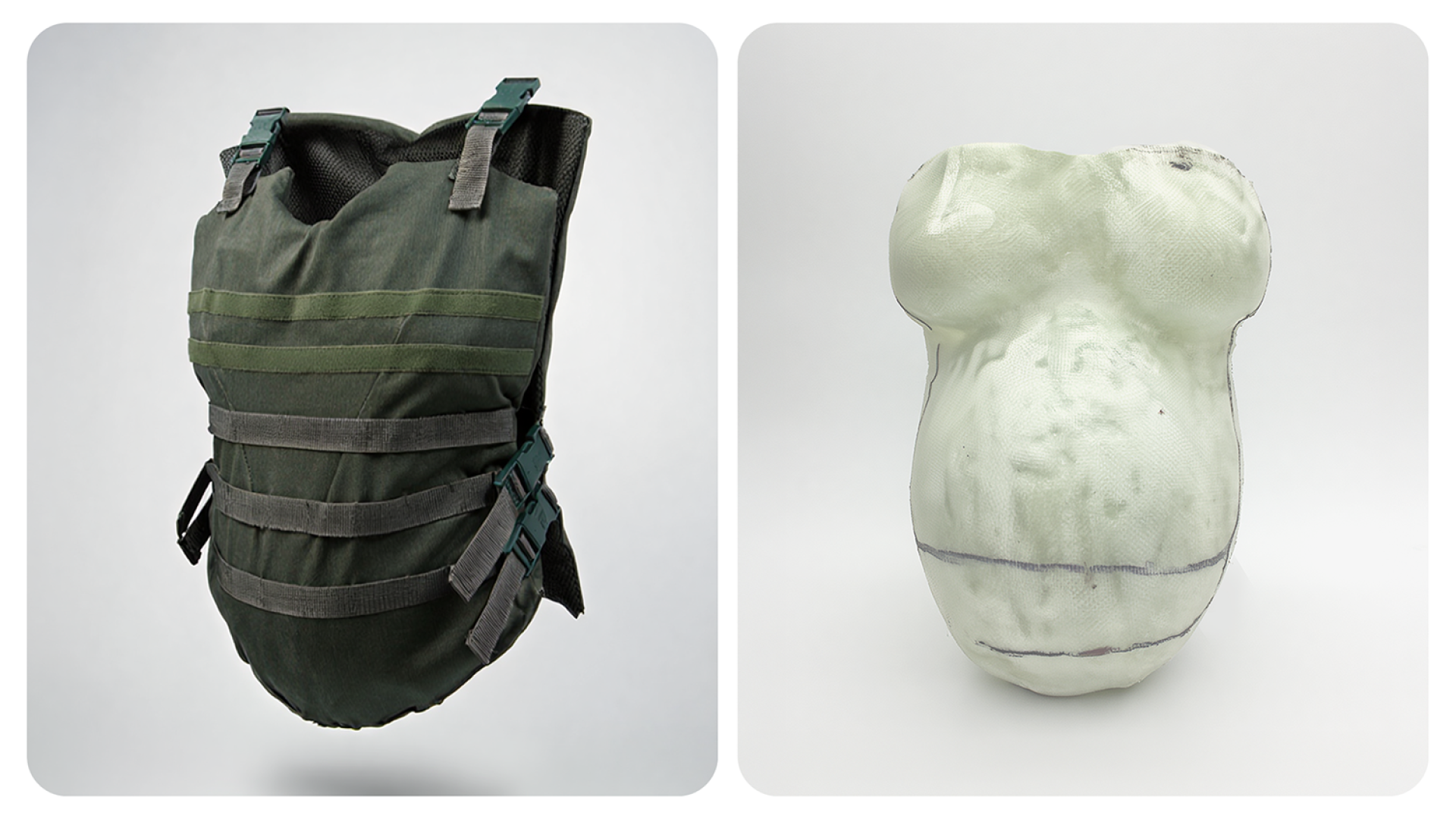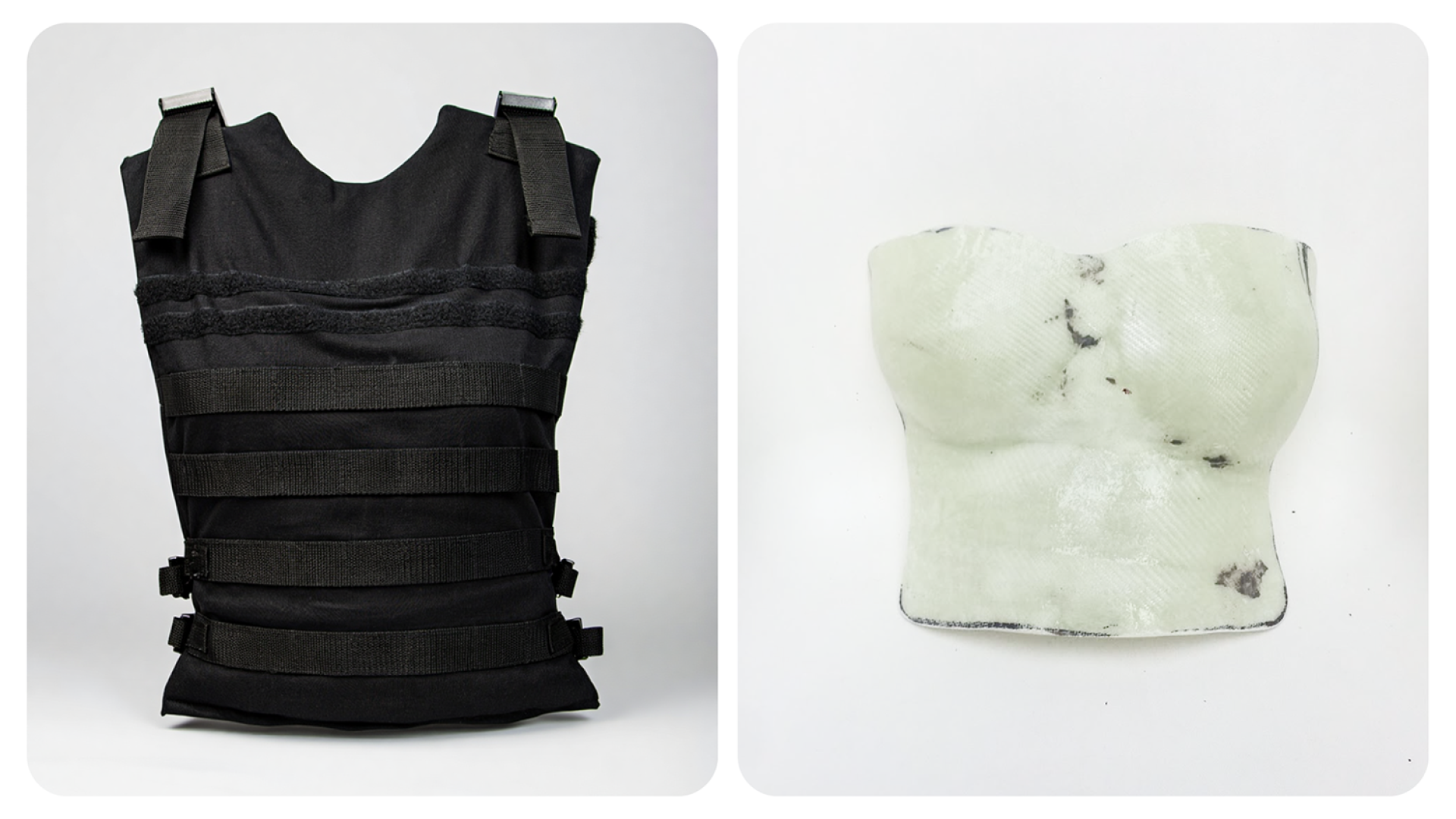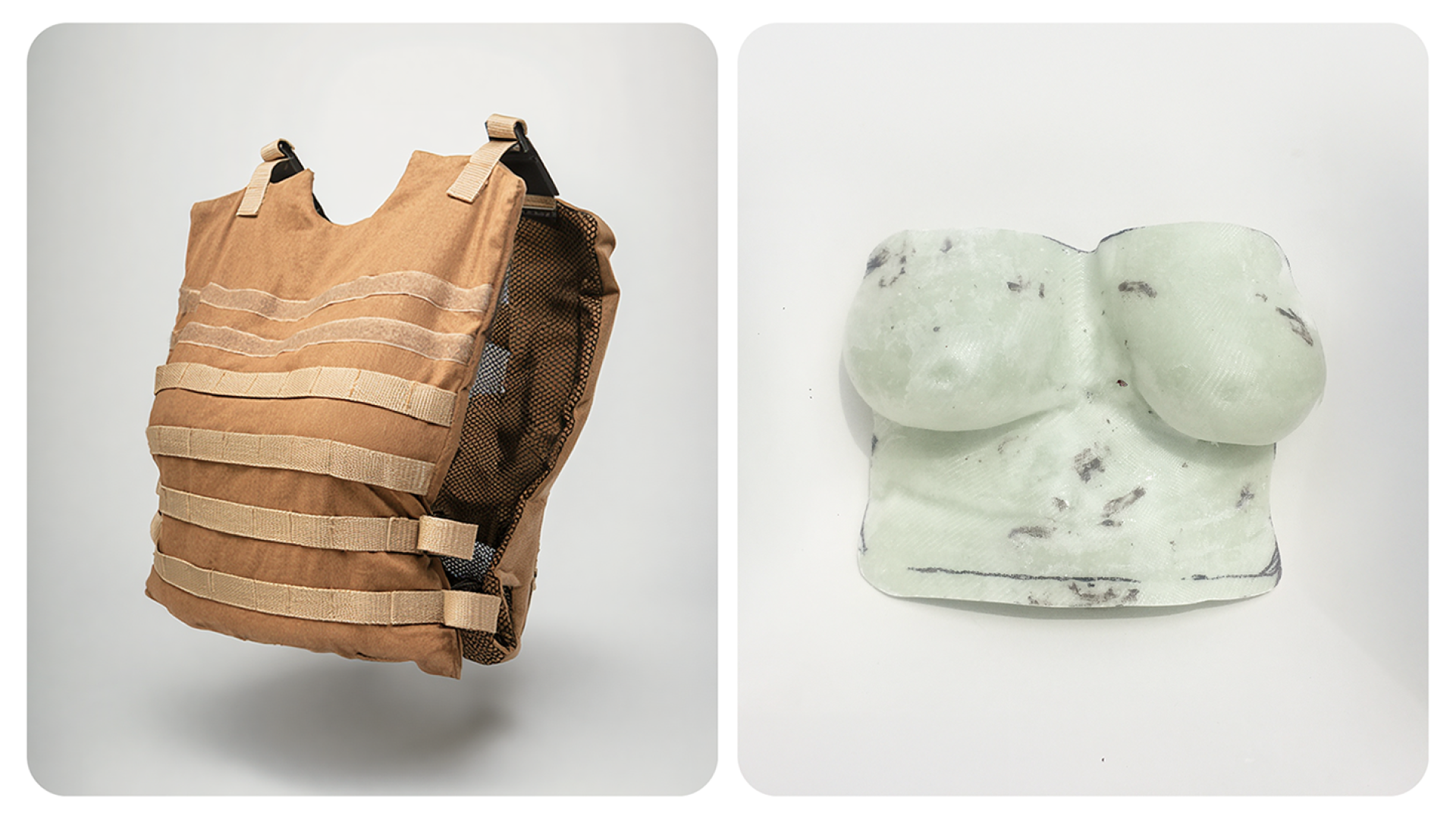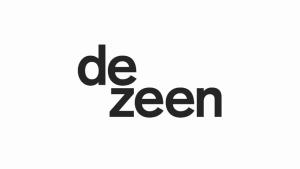Exclusion in design
This is what bulletproof looks like (2019) explores the design of bulletproof vests for those too often excluded from design: [all] women and their different body types, which find themselves changing constantly, e.g. pregnancy.
While the Dutch Ministry of Defense finally handed out the first vests in September this year, it is no longer a symbol of the military alone. It has become a metaphor for survival in a world that still designs as if the “reference man” is the only body worth protecting.
The gender data gap
Originally created to expose the gender data gap - the absence of women in research, safety testing, and product design - the work remains just as urgent today. The consequences of this gap go far beyond discomfort or inefficiency: they touch on safety, vulnerability, and survival itself.
Daily realities have changed: rising numbers of femicide in the Netherlands and war and violence worldwide. In these contexts, protection is never neutral: whose body is measured? whose life is counted? whose safety is prioritised?
With the new development at the Ministry of Defense we, as a whole, are going forward with creating awareness to the shapes, needs, and realities of all women. ‘This is what bulletproof looks like’ keeps challenging the blind spots of design and insists: women’s safety is not optional.
 Dogs are allowed
Dogs are allowed
 Free wifi available
Free wifi available
 Toilets available
Toilets available
 Partially wheelchair accessible
Partially wheelchair accessible
 Wheelchair friendly toilet available
Wheelchair friendly toilet available
